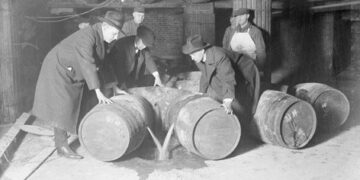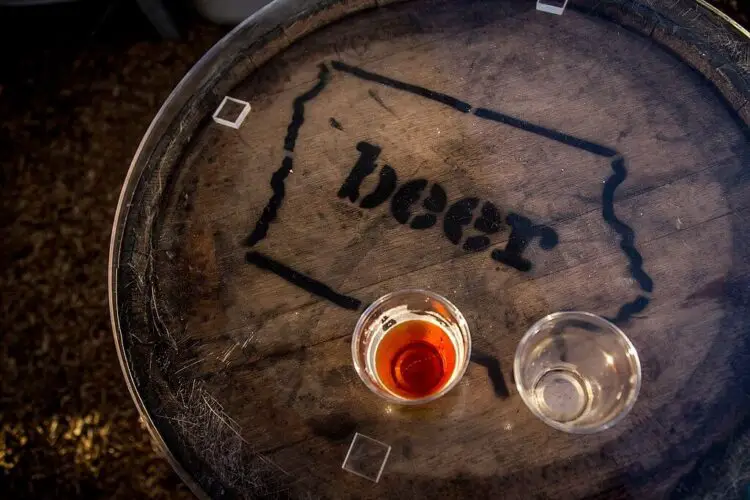Craft beer, namely beer that is brewed traditionally and with a taste for distinctive flavours and styles rather than mass appeal, is enjoying a major renaissance in the USA.
Out of Darkness Came Light
When a handful of brewing behemoths effectively took over the beer industry during the decades following Prohibition their pursuit of profit effectively squeezed US beer culture dry of the rich traditions, flavours and styles first introduced by European immigrants. Brilliant marketing and an undemanding consumer may have turned the likes of Miller, Budweiser and Coors into hugely popular and lucrative brands, but the more discerning drinker, left with a choice between several varieties of the same tasteless pale lager, felt somewhat hard done to.
The Roots of Craft Brewing
Out of this dark era of US brewing history came light: homebrew. Those beer lovers craving the variety and flavours available in Europe were left with no other choice than to brew their own. Having been given official sanction by President Jimmy Carter in 1976 when homebrewing was nationally legalised, these early pioneers established the roots for the craft brewing industry.
Inspired by the old world traditions of artisan beer and cask ale production still alive in Great Britain, Germany and Belgium, and motivated by a desire to reintroduce Americans to more flavoursome beer and traditions that had been lost in their own country, some homebrewers turned a hobby into a profession by starting up their own small scale brewing operations.
The New Albion and Anchor
Founded in 1976 by one homebrew enthusiast, The New Albion Brewery in Sonoma, California, was a important early microbrewery pioneer. It was not a success as a business venture, instead its achievement was in inspiring a great many other homebrewers to follow suit and start their own microbreweries.
The 1980s became the pioneer era for craft brewing. Its growth during this period was led by such passionate trailblazers as Sierra Nevada, Mendocino Brewing Co., Yakima Brewing & Malting Co. and Anchor.
Anchor Brewing Company was notable for being both part of the ‘new breed’ and a rare historic enterprise, having kept alive some of America’s original beer traditions, including California Common Beer or ‘Steam Beer’. It was only able to survive so long because, on the verge of collapse, it was purchased in 1965 by a visionary force in Fritz Maytag who reinvented it for the new era while keeping alive its unique beer production.
The Rise of Microbreweries and Craft Brewing
The microbreweries and brewpubs of the 1980s struggled against a fierce market conditions to establish the foundations for their new industry. Regarding their efforts as little more than a novelty, at the time the brewing giants saw no threat or future in these small scale amateur operations.
It took until the beginning of the new decade for the brewing standards to reach a level of quality and consistency that it encouraged greater distribution and, as a result, an increased awareness and popularity. Between 1991 and 1995, annual volume growth increased from 35% to a high of 58%.
The mid-2000s saw the craft brewing revolution hitting its stride, with annual growth for the craft sector increasing between 6 and 12 % year on year from 2004. The number of craft brewers in operation had increased from eight early crusaders in 1980 to 537 in 1994 to 1482 in 2009. 344 congressional districts now boast at least one brewery and the north western states shows the greatest density of microbrewery action – with Portland, Oregon its beating heart – and the southern central and south-eastern states the least.
The Sign of Success
Although craft brewers still only account for around 4% of sales in a market dominated by pale lagers, the fact that the megabrewers are now keen to get a share of the craft brewing phenomenon by producing their own craft beers and buying into authentic breweries is a major sign that it is a very significant area that will continue to grow.
There are hopeful signs that the US will return to the thriving brewing heritage it lost when economic ambitions were sated at the expense of flavour and character.






















































